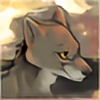HOME | DD
 Amplion — Shepherd beetle
Amplion — Shepherd beetle

Published: 2011-02-16 05:41:44 +0000 UTC; Views: 1673; Favourites: 30; Downloads: 13
Redirect to original
Description
Habitat: Mediterranean deserts, plants of leafless paunchstem invaded by water-bearing plant louse.Symbiosis is very favourable life strategy: mutually helping to each other, representatives of different species get ability to survive in extreme conditions and to form productive communities. Examples of this benefit are represented, accordingly, by lichens and coral polyps. Besides them, in nature there is a set of other species of live beings forming symbiotic connections and receiving success in survival due to it.
In desert at the edge of ultrahaline Mediterranean swamps sources of food are poor, but some species find an opportunity for specialization and exist due to it successfully even in extreme conditions. Among plants of this area there are many succulents reliably protecting stocks of water from herbivores with the help of poisons. One of these plants is leafless paunchstem, a succulent umbellate plant with thick leafless stalks. This plant is a habitat of various species of invertebrates. One of inhabitants of this plant is a large species of weevil beetles about 3 cm long, named shepherd beetle. This insect has ash-grey color with black legs and bottom part of body.
Adult insect of this species is omnivore. Shepherd beetle feeds on nectar of paunchstem, which is plentifully secreting at the inflorescences, but receives additional protein food, eating various small insects flying to inflorescences of paunchstem. The plant does not receive from its presence of any benefit, but there is one species of insects, for which the union with shepherd beetle has a vital importance.
In desert water is a biggest value for animals. Sap of paunchstem contains a plenty of alkaloids and is not suitable for drinking almost for all species of animals, except for small species of sucking insects, the water-bearing plant louse. In colonies of this plant louse shepherd beetle has found a plentiful source of drinking water. Each individual of plant louse from time to time secrets a drop of almost clean water not containing poisons and suitable for drinking. With the help of head extended as a proboscis this beetle easily gathers water in colony of plant lice, and due to it survives in hot desert.
The head of shepherd beetle is extended to very long proboscis exceeding in length thorax and abdomen in total. The proboscis is arc-like bent from top to bottom, the mouth and short antennae are located on its tip. On the top part of proboscis two or three pairs of acute spikes develop, sticking upwards and in sides. Neck of this insect is very mobile. Due to its movements head may be turned in under body and be curved forward by sharp movement – this way beetle strikes a blow by proboscis, armed with spikes. By such impacts of proboscis shepherd beetle drives away from plant lice of large insects which can injure them – predatory beetles, solitary wasps and grasshoppers. However, at food shortage it also can eat a small amount of water-bearing plant lice from preserving colony. But this casual damage is not comparable with the benefit, brought by this beetle to colonies of water-bearing lice, preserving them from enemies.
Legs of this beetle are very long – they are longer than a body of insect. Usually shepherd beetle cautiously walks in colony of plant lice, gathering liquid secreted by them. By short antennae and tentacles of lower lip this beetle tickles plant lice, and licks off their secretions.
It is able to fly, but makes it reluctantly and flies slowly because of massive head. Shepherd beetle flies at night and in the morning, while birds have not woken up. Being attacked by bird it folds wings or turns in legs, and falls on the ground, and then is hidden in cracks of ground under the plant.
When paunchstem plants begin blossoming, beetles move to their inflorescences and eat nectar. Inflorescences of paunchstem, reaching one meter in diameter, serve as a place of meeting of beetles of opposite sexes, and also as arena for determine of relations between contender males.
Fertilized female of shepherd beetle searches for egg laying for absolutely other species of plants – roots of paunchstem contain not less alkaloids, rather than its overground part, and larvae of this species do not eat them. Due to keen sense of smell the female of shepherd beetle searches for tubers of other deserted plants, located deeply in ground. It is dug in the ground above the tuber, and at the ground surface only a part of proboscis is visible. Having extended an abdomen, the beetle female lays eggs in ground as deep, as possible, and as close, as possible to the surface of tuber. The larva bursts from eggs and at once searches by smell for a tuber of fodder plant. It gnaws through the tuber and develops in its pulp during dry season. The larva keeps activity in winter – it is necessary to have time to pass the metamorphosis. The next year in spring it leaves tuber and pupates in the top layer of ground near to sprouts of fodder plant. Within one month it turns to adult beetle and flies out to search for fodder plant. Adult shepherd beetles perish at the end of an autumn.
Related content
Comments: 6

Сперва думал и его цветным рисовать, но потом передумал - всё-таки он черно-серый по замыслу.
👍: 0 ⏩: 0

Спасибо. Жаль, меня не хватило на тлю (хотел нарисовать под его ногами) ...
👍: 0 ⏩: 0




















